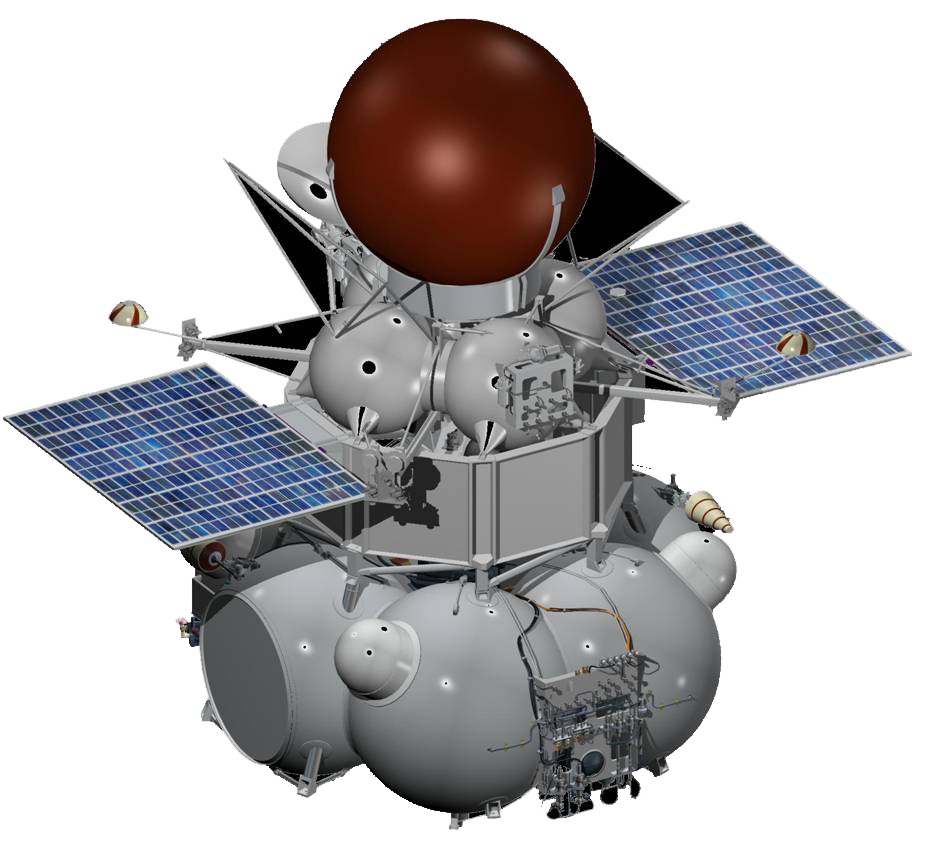
Recently it became
known that the Lavochkin Scientific Production Association began work on the design of the Venera-D spacecraft, which will be used to study the neighbor of the Earth. Work on the project
is conducted jointly by the forces of Russia and the United States.
“International partners established the Joint Russian-American Working Scientific Group (Joint Science Definition Team) for the exploration of the planet Venus, which included representatives of the state corporation Roscosmos, NASA, the NPO. Lavochkin, IKI RAS, Central Research Institute of Machinery and a number of scientific organizations in Russia and the United States. The task of the group is to define scientific goals and work out a possible mission to the planet based on the Venera-D project, said Roscosmos representatives.
Currently known more or less detailed concept of the system. "Venus-D" will consist of the orbital part, the landing module and atmospheric probes. The letter "D" means "long-term research" or "long-term." The project itself to create a device called "To Venus together", work on its implementation began in March 2017. In August 2017, Roscosmos announced that the launch of Venus D will happen
after 2025 .
The launch is planned to be carried out using the Angara-5 heavy booster rocket with the Briz-M or hydrogen KVTK upper stage. Perhaps the launch will be held from the Vostochny space center. The development of "Venus-D" is conducted jointly with NASA. The agency plans to develop and provide for the project a controlled atmospheric platform VAMP or several small probes. They are going to be manufactured on the basis of high-temperature electronics, so that they can work on the surface of Venus not just a few minutes, but thousands of hours.
As for the module option, if it is selected, the modules will be dropped into different areas of the planet, where they will be able to observe the atmosphere of Venus. In addition, scientists are discussing the possibility of incorporating drifting balloons or a small subsatellite in the mission. Probably there will be even two balloons. One of them will be launched at an altitude of 55-60 km from the surface of the planet, and the second - under the clouds, just below, at an altitude of 45-50 km. Balloons can work no more than eight days.
Funding for the project will be provided by the Federal Agency for Scientific Organizations (FANO). "Venus-D" is an expensive device. Designing it will cost several hundred million rubles. So far, the exact amount of funding is unknown, since the specialists working on the project must provide all the details of future development, with the requirements for individual modules of the system.
"Venus-D" is a logical continuation of the basic research that was conducted in the 60-80s, as well as in the early nineties of the last century by both Soviet and American space stations.
Russian scientists are engaged in other international projects. In particular, the program "ExoMars", which aims to explore Mars. The first stage of this program was performed in 2016, then the device was launched to this planet
Trace Gas Orbiter (TGO) and the Schiaparelli landing module. Work on the stage involving the delivery of the Mars rover from the orbit of the planet to the surface is scheduled for 2020. All equipment to be used during the mission must withstand extreme conditions. These are high temperatures (about 460 degrees Celsius) and pressure over 90 atmospheres. Moreover, some mission modules will be in such conditions for about a month.
For the first time, Venus began to be explored using interplanetary stations in 1961. Then the Soviet Union sent to the planet apparatus "Venera-1", which became the first of the 16 stations in this series. The last of them went into space in 1983. The project involved the USSR, the European Space Agency and the United States. Two more "Venusian" apparatus went to Venus in 1984. In the future, it
is planned to create an integrated station “Venera-Glob”, whose task will be to comprehensively research Venus. It will consist of: an orbiter, a long-lived Venusian station, balloon probes, possibly a veneer.